Instruction
Faults and Fixes: Getting Too Steep
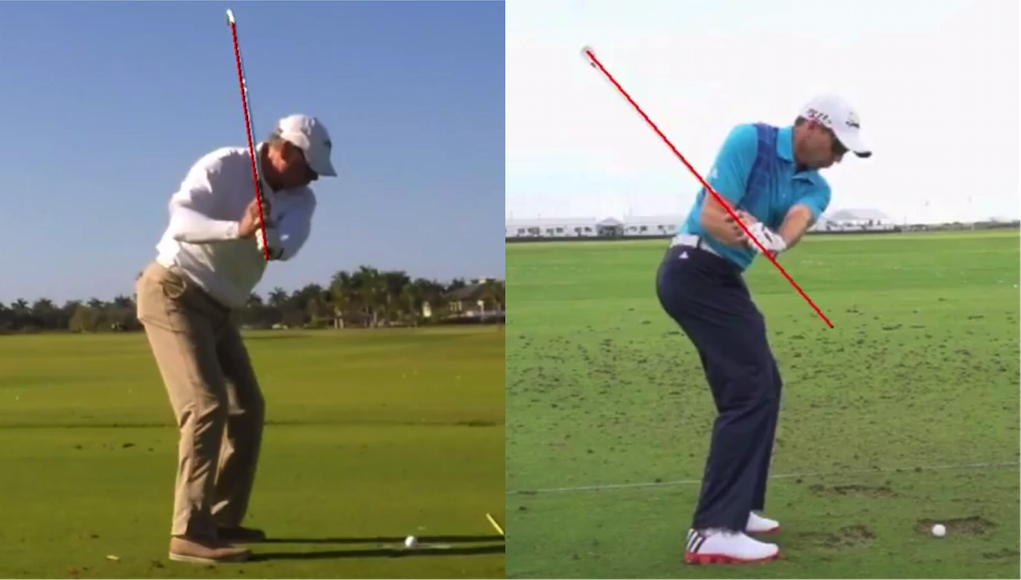
The idea of correcting your golf swing is one that all of us entertain, and we probably all should work to fix our swing at one time or another… at least those of us who want to play better. So golfers go in search of faults and fixes every chance they get. If a golf website, video or magazine offers a quick tip that might help, it makes too much sense to try it.
But there has always been something missing from this school of golf. In my many years of teaching, I have found that a singular swing correction almost never works. The reason is simple; when you get the golf club or your body out of position in your swing, you will inevitably attempt to correct that move to get the club face back to the ball.
Here’s an example. Golfers who get the club too “steep,” either during the backswing and especially during the downswing, are almost always “shallow” at impact. The reason is simple; NOBODY wants to hit the ground the behind the golf ball, so golfers make every compensation possible to avoid it (they stand up, they back up, they chicken wing, they raise the handle, etc.). So the result is a swing that is too steep, but an attack angle that is too shallow.
“I have found that a singular swing correction almost never works.”
What I’d like to offer to GolfWRX Readers is a series of articles that deals with two-part adjustments called “Faults and Fixes.” Each article will offer a correction of the initial problem, and just as importantly a correction to the reaction to that fault.
I will also discuss the order in which faults may be fixed. Make no bones about it; this is a series for serious golfers who wants to take their game to the next level. Let’s get started.
Fault: Too Steep
Most amateurs get the golf club too steep, particularly in the transition. If the butt end of the club is not pointed at the golf ball or the line of flight, it can be too vertical.
This incline can cause fat shots, toe hits, weak slices and occasionally toe hooks. The cause can be one of several things: a cupped lead wrist, crossing the line at the top, coming over the top, trying to “lag” the club down (instead of moving it down the plane) or a “flying” rear elbow.
This steepness in the swing is common and very correctable. But here’s the catch; does the steepness of the golf club need to be corrected, or does a golfer’s REACTION to the steepness have be fixed? And how do you know? How can you be sure if it’s the position of the club causing poor impact, or if it’s a reaction to the poor position? The only way to be certain is to know the answer to this question, “What’s happening at impact?
Too steep, by definition, should cause deep divots, slices and toe hits… but you may be very shallow with tops, hooks or even shanks. In the later case, you can be sure that the reaction to the golf club is your issue.
In the video at the top of the article, you saw a golfer who hits “thin hooks.” But if you only watched the video of his swing you would think he’s hitting fat slices. You see him raising the handle and flipping the hands through impact in the video. If he was actually sticking the golf club in the ground behind the golf ball and slicing, we would FIRST have to put his club in a better position. But remember if we do and he has the old reaction, he may actually miss the golf ball altogether! Tricky business, because the last thing a teacher wants to do is have the first few shots be worse.
What I usually do, and what I’m suggesting you do, is correct impact. In working with this golfer, I helped him learn to release the club and hit down through the golf ball. In other words, I made the club act as it should from where it was. I took away his reactions to the steep position instead of correcting the club first. Why? Because he’s shallow more than anything and hits hooks, even from that open club face position and steep shaft.
Let impact be your guide, NOT the positions the video suggests could be a potential problem. If and when you start actually getting steep, THEN try correcting the golf club.
Here’s a few tips for the golfers out there who are struggling with an impact position that is too shallow:
- Hitting balls from downhill lie.
- Turning through the ball at impact and getting more onto lead foot.
- Releasing the club down (not dragging the handle).
- Lowering the handle into impact.
With these corrections a golf swing will become steep, and then we can lay the shaft down a little.
- LIKE127
- LEGIT22
- WOW8
- LOL17
- IDHT9
- FLOP10
- OB12
- SHANK142
Instruction
Clement: Laid-off or perfect fade? Across-the-line or perfect draw?

Some call the image on the left laid off, but if you are hitting a fade, this could be a perfect backswing for it! Same for across the line for a draw! Stop racking your brain with perceived mistakes and simply match backswing to shot shape!
- LIKE0
- LEGIT0
- WOW0
- LOL0
- IDHT0
- FLOP0
- OB0
- SHANK1
Instruction
The Wedge Guy: The easiest-to-learn golf basic

My golf learning began with this simple fact – if you don’t have a fundamentally sound hold on the golf club, it is practically impossible for your body to execute a fundamentally sound golf swing. I’m still a big believer that the golf swing is much easier to execute if you begin with the proper hold on the club.
As you might imagine, I come into contact with hundreds of golfers of all skill levels. And it is very rare to see a good player with a bad hold on the golf club. There are some exceptions, for sure, but they are very few and very far between, and they typically have beat so many balls with their poor grip that they’ve found a way to work around it.
The reality of biophysics is that the body moves only in certain ways – and the particulars of the way you hold the golf club can totally prevent a sound swing motion that allows the club to release properly through the impact zone. The wonderful thing is that anyone can learn how to put a fundamentally sound hold on the golf club, and you can practice it anywhere your hands are not otherwise engaged, like watching TV or just sitting and relaxing.
Whether you prefer an overlap, interlock or full-finger (not baseball!) grip on the club, the same fundamentals apply. Here are the major grip faults I see most often, in the order of the frequency:
Mis-aligned hands
By this I mean that the palms of the two hands are not parallel to each other. Too many golfers have a weak left hand and strong right, or vice versa. The easiest way to learn how to hold the club with your palms aligned properly is to grip a plain wooden ruler or yardstick. It forces the hands to align properly and shows you how that feels. If you grip and re-grip a yardstick several times, then grip a club, you’ll see that the learning curve is almost immediate.
The position of the grip in the upper/left hand
I also observe many golfers who have the butt of the grip too far into the heel pad of the upper hand (the left hand for right-handed players). It’s amazing how much easier it is to release the club through the ball if even 1/4-1/2″ of the butt is beyond the left heel pad. Try this yourself to see what I mean. Swing the club freely with just your left hand and notice the difference in its release from when you hold it at the end of the grip, versus gripping down even a half inch.
To help you really understand how this works, go to the range and hit shots with your five-iron gripped down a full inch to make the club the same length as your seven-iron. You will probably see an amazing shot shape difference, and likely not see as much distance loss as you would expect.
Too much lower (right) hand on the club
It seems like almost all golfers of 8-10 handicap or higher have the club too far into the palm of the lower hand, because that feels “good” if you are trying to control the path of the clubhead to the ball. But the golf swing is not an effort to hit at the ball – it is a swing of the club. The proper hold on the club has the grip underneath the pad at the base of the fingers. This will likely feel “weak” to you — like you cannot control the club like that. EXACTLY. You should not be trying to control the club with your lower/master hand.
Gripping too tightly
Nearly all golfers hold the club too tightly, which tenses up the forearms and prevents a proper release of the club through impact. In order for the club to move back and through properly, you must feel that the club is controlled by the last three fingers of the upper hand, and the middle two fingers of the lower hand. If you engage your thumbs and forefingers in “holding” the club, the result will almost always be a grip that is too tight. Try this for yourself. Hold the club in your upper hand only, and squeeze firmly with just the last three fingers, with the forefinger and thumb off the club entirely. You have good control, but your forearms are not tense. Then begin to squeeze down with your thumb and forefinger and observe the tensing of the entire forearm. This is the way we are made, so the key to preventing tenseness in the arms is to hold the club very lightly with the “pinchers” — the thumbs and forefingers.
So, those are what I believe are the four fundamentals of a good grip. Anyone can learn them in their home or office very quickly. There is no easier way to improve your ball striking consistency and add distance than giving more attention to the way you hold the golf club.
More from the Wedge Guy
- The Wedge Guy: Golf mastery begins with your wedge game
- The Wedge Guy: Why golf is 20 times harder than brain surgery
- The Wedge Guy: Musings on the golf ball rollback
- LIKE86
- LEGIT13
- WOW6
- LOL1
- IDHT0
- FLOP4
- OB1
- SHANK8
Instruction
Clement: Stop ripping off your swing with this drill!

Not the dreaded headcover under the armpit drill! As if your body is defective and can’t function by itself! Have you seen how incredible the human machine is with all the incredible feats of agility all kinds of athletes are accomplishing? You think your body is so defective (the good Lord is laughing his head off at you) that it needs a headcover tucked under the armpit so you can swing like T-Rex?
- LIKE0
- LEGIT2
- WOW2
- LOL0
- IDHT0
- FLOP0
- OB0
- SHANK2
-

 19th Hole2 weeks ago
19th Hole2 weeks agoDave Portnoy places monstrous outright bet for the 2024 Masters
-

 19th Hole3 days ago
19th Hole3 days agoJustin Thomas on the equipment choice of Scottie Scheffler that he thinks is ‘weird’
-

 19th Hole2 weeks ago
19th Hole2 weeks agoTiger Woods arrives at 2024 Masters equipped with a putter that may surprise you
-

 19th Hole3 days ago
19th Hole3 days ago‘Absolutely crazy’ – Major champ lays into Patrick Cantlay over his decision on final hole of RBC Heritage
-

 19th Hole2 weeks ago
19th Hole2 weeks agoTwo star names reportedly blanked Jon Rahm all week at the Masters
-

 19th Hole1 week ago
19th Hole1 week agoReport: LIV Golf identifies latest star name they hope to sign to breakaway tour
-

 19th Hole1 week ago
19th Hole1 week agoNeal Shipley presser ends in awkward fashion after reporter claims Tiger handed him note on 8th fairway
-

 19th Hole1 week ago
19th Hole1 week agoBrandel Chamblee has ‘no doubt’ who started the McIlroy/LIV rumor and why








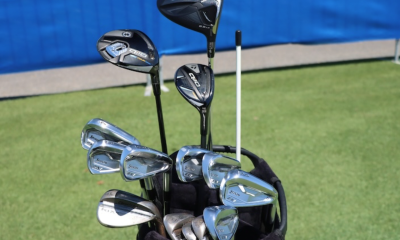

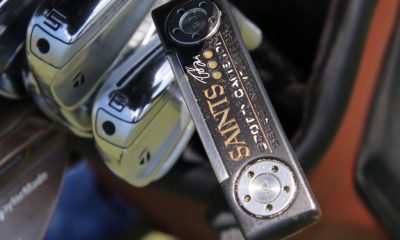

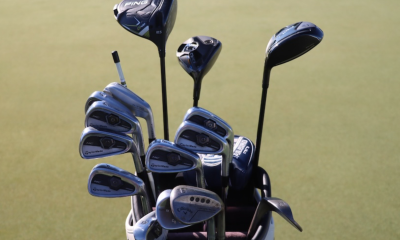

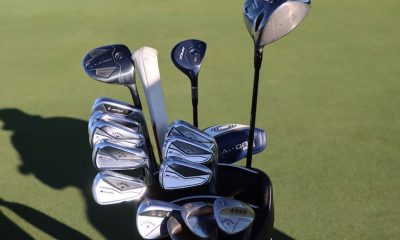

Rogerinnewzealand
Feb 25, 2017 at 3:16 pm
Dennis, as always, a thoroughly researched article with great insight! And courteous answers to the disbelievers.
Dennis Clark
Feb 25, 2017 at 3:46 pm
Thx Roger…glad you enjoyed it.
Mike
Feb 23, 2017 at 4:28 pm
you have to fix the turn first . he doesnt turn his shoulders and has no depth at the top . all he can do is throw is hands forward. fix the turn first
GOLFman
Feb 23, 2017 at 4:43 pm
A+. Mr Clark mentioned a arms and hands connection. I agree but I’m sure Dustin Johnson wouldn’t hit anywhere without the ground and proper footwork. Needs depth big time.
dennis clark
Feb 23, 2017 at 3:17 pm
John Jacobs once remarked that the he had heard so much about footwork in golf that he thought the objective of the game was to kick the ball around the course. Footwork is critical to balance and creating force but does not direct the golf club. After observing this dynamic for some 35 years I have reached the conclusion that the body reacts to the position of the club. Not the other way around. No amount of footwork or leg work or great balance automatically puts the golf club in the correct position. It is held by the hands and arms. When it gets too steep, too flat, too outside, too open, too closed etc. the body will do whatever it can to right the ship. That’s why the grip is soooo critical. IT controls the face, therefore commands the rest of the motion. If i move the weight of my body perfectly but cup my lead wrist or orient the club too steeply I will hit a well
Balanced slice. And when my golf ball spins off to the right I will swing well left to combat it.
SoCal
Feb 23, 2017 at 4:15 pm
Well, we agree to disagree. Try making a golf swing without touching the ground, you’ll get my point… Motion that takes place in the body in rotation from the ground, involves position, velocity, acceleration, plus angular position, angular velocity and angular acceleration. Each of which a vector is needed. Thus ground… It’s the initial start point, plus proper balance and footwork is very important…
Dennis Clark
Feb 24, 2017 at 6:56 am
But we are NOT disagreeing on proper use of ground reaction forces. No teacher who studies this craft seriously would disagree with that. Its simple physics and bio mechanics. However, where the misunderstanding lies may be this: I’m trying to explain WHY golfers misuse the ground and execute poor motions. It is because the golf club is well out of position and no proper ground force can put it in the correct place because the hands and arms hold the club. This is where some of the science today is divorced from the reality of what golfers actually do. He could have 100% correct turn and weight displacement with a poor grip, a flying elbow, a cupped lead wrist etc…and then when the golf club gets in the position we see here (or any number of poor positions) he will IMPROPERLY use the ground forces you correctly describe. Or even if he did push off the earth properly starting down it will not, could not, hit a good shot because the club is open and steep. In this case he would be very late into impact with an open face. So what does he do? He reverses his weight, hangs back and raises the swing center to try and right the ship. If someone can prove to me that proper ground reaction forces will correct the plane and face of the golf club, I will take another look at this. Believe me I have changed and adapted to many things the golf science community has taught us as I’ve grown as a teacher over 35 years. But I cannot see the connection here. BTW So Cal I am not disagreeing with you personally, I also raised this point at the teaching and coaching summit recently and raised a few eyebrows there too. I did not receive one logical good answer to the disconnect I see here. Thx for the discussion, these are always healthy for the game and our part in it. DC
HoleIn2
Feb 23, 2017 at 4:27 pm
There is a video on how pressure helps hit a draw on golfwrx by meandmygolf. Give it a view Mr Clark. I think SoCal brings up a valid opinion. Plus your reference to the Great Mr Jacobs is ok, but technology now is what it is. The instructor I have in Arizona was mostly based on how my feet and body work. JAT
Dennis Clark
Feb 24, 2017 at 7:02 am
HoleIn2…I am aware of the video and own a boditrak unit myself, but let me ask you this as I did them: If I use the proper “force” and execute an inside path, WITH an open face from a steep shaft or a poor grip, will I hit a draw. And how will those forces correct that plane or grip? I’ll get on any force plate you want and execute all the correct motions and top, slice, hook etc all day, IF that golf club is not fixed. Thx DC
Pinhigh
Feb 23, 2017 at 4:49 pm
Completely disagree about your position on proper lower body mechanics in relation to the path on the backswing. Went to a GEARS assessment and that’s what they stressed the most. Body lineage.
SoCal
Feb 23, 2017 at 1:25 pm
IMO. You’re not discussing his poor footwork. Place him on a pressure plate to get him to feel dynamic motion.
Looper
Feb 23, 2017 at 1:27 pm
I agree with SoCal I think you’re working in reverse. SoCal might like from the ground up.
Philip
Feb 22, 2017 at 9:52 pm
So would you know why the golfer is steep? Or it really isn’t relevant in that everything is so interconnected and reliant on each other that it is easier to get impact correct first, and then over time the body will correct itself all the way back to one’s setup and how they hold the club? It’s just that one has to allow their body to teach them how to swing the club instead of thinking the swing? Just curious because I was stalled with my OTT (backswing too flat or totally upright ITO) for 3 years before I changed my approach 2 years ago to focus on impact. Since then little things have continually clicked and now my swing is falling into place over this winter. One of the bigger things for me was to just stop and take a minute to reflex on what it was I wanted my body to do – I never actually visually thought about what a golf swing looked and felt like from the person doing it – I was always looking from the 3rd person via videos and photos.
dennis clark
Feb 23, 2017 at 12:09 pm
right. What’s know as whole part whole style learning. You have to have the big picture in mind before working on details. I agree.
Randel
Feb 22, 2017 at 5:27 pm
Nothing wrong with an up right golf swing, agree getting to Impact with it takes a little practice, as Inbee Park, Jack Nicklaus, D.J. Trahan etc. have proven it can be done to a high level…..
Dennis Clark
Feb 22, 2017 at 7:11 pm
Yea worked pretty well for Jack huh? Tom Watson, Johnny Miller, nowadays Geoff Ogilvy…. Big diff here though. They were upright for sure and even more vertical into impact than say Trevino or Hogan, but…rarely will you see an elite ball striker get the center of mass of the golf club ABOVE their hand path in transition. Craig Parry, maybe Craig Stadler possible rare excetions. Mid, high cap club golfers do, so the face gets seriously open, as the video demonstrate. The first little move from the top flattens on even the most upright swings of the professionals. Take say Furyk, that almost gets too flat into impact, you’d never think it at the top. They MATCH components amateurs don’t bye and bye… Thanks for reading
Adam Barnett
Feb 27, 2019 at 3:09 pm
I have a friend who’s built very much like Craig Stadler, and is in an identical position at the top. He struggles with weak push fade shots, fat shots, and with impact as a whole. He’s not looking to start hitting draws, only to get better impact. Any drills you’d recommend to help him get better strikes?
dennis clark
Feb 22, 2017 at 4:30 pm
The last paragraph states: IF you are struggling from shallow IMPACT position, try these drills. DOWNHILL LIES and sidehill ball-below-the-feet lies are a drill for steeping attack angles; Uphill lies and ball above feet are used to SHALLOW attack angles. The golfer has a VERY shallow attack angle, hence the point of the article. The point is NOT to change transition but to change the REACTION to the transition. If/When he gets too steep at IMPACT, then and only then we will address shallowing the AA.
MAC
Feb 22, 2017 at 4:11 pm
I CAN’T WAIT TO SEE A GOLFER WITH A STEEP TRANSITION HIT BALLS FROM A DOWN HILL LIE AS A DRILL! WTF!?!?!?
YOU ARE OUT OF THE PROGRAM!
Bigly Yuge
Feb 22, 2017 at 1:48 pm
Just do the A-Swing. You can go from the photo on the left to the photo on the right if you just did the A-swing. Simples!
S Hitter
Feb 23, 2017 at 11:12 am
Or, just copy Jim Furyk. Done!
dennis clark
Feb 22, 2017 at 12:42 pm
I agree Marnix. That would a good title.
dan
Feb 22, 2017 at 12:08 pm
Why are there so many shank comments on this article? What I took from it is that it’s important to understand that just trying to fix the “look” of someones swing is a bad idea if you don’t understand that the glaring “look” can influence a players reaction at impact. Makes sense to me. You have to have the student understand the basic impact conditions you’re trying to get them to achieve before you start talking about the swing.
I liked the article. About putting the horse before the cart.
If people are going to click shank, they should at least give a basic explanation of why.
Marnix
Feb 22, 2017 at 12:06 pm
Well done, although the title of the article is a bit confusing – it should really be something like “Impact is Everything”, or “Make Students Better, not Worse”. I have had quite a few lessons where my ball striking afterwards was worse then before, probably because they started with fixing the wrong fundamental flaw first. And yes, in the theme of ‘let’s start from scratch and get you a new swing’, that approach is defensible. But it really takes the fun out of your game for a (long) while until you have mastered the new fundamentals. It’s not about fixing what’s wrong, it’s about fixing what matters. Actually, that would be a good title too :).
dennis clark
Feb 22, 2017 at 11:59 am
When golfers get the club back to shaft plane at address or close to it they often shank the ball. That’s why they stand the club UP!
Dennis Clark
Feb 22, 2017 at 10:10 am
If you notice the grip end of the club is pointed up at his chest into impact; it started at his belt buckle. That’s what I mean by striving to get the handle lower into impact. He raises the handle because he is too steep to release the club properly.
Steve
Feb 22, 2017 at 7:51 am
What exactly do these things mean?
Releasing the club down (not dragging the handle)
Lowering the handle into impact.